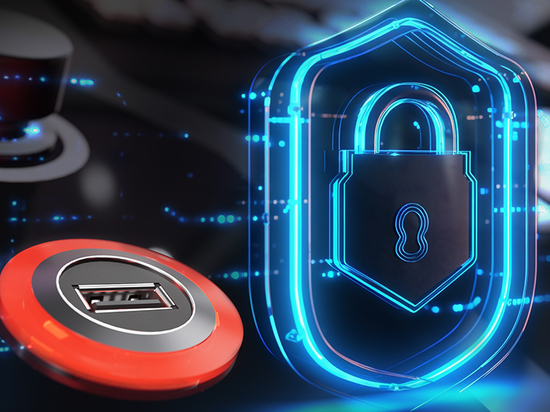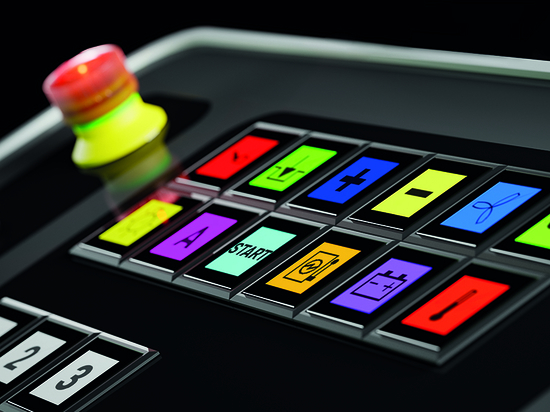
#Industry News
M12 – A lot of connections are offered by this technology
The M12 connection technology is a major trend.
More and more products are equipped with a M12 plug. There are good reasons for that, as Schlegel´s product manager Torsten Singer explains in this interview. But he also mentions the limitations of the M12 technology.
The amount of enquiries for products with M12 connector is on the rise. Is that only true for Germany or is it a trend all over Europe or even around the globe?
The M12 connector has been introduced in 1985, so almost 40 years ago. During the first decades this technology was mainly used in the automotive industry, but thanks to the digitisation and industry 4.0 the M12 connector experienced an incredible boom which still lasts. Bus systems, automation, robotics and IIoT create a basis for further, numerous components and devices that are wired with a M12 connector. An increase in enquiries and also further development of the M12 technology can be expected for the next years. This is currently evident by improvements, as for example the push pull mechanics where there is a "click" when connecting the plug. For some fields, the vast spread is still exclusive in Europe, but the M12 connector has been established globally in general.
Which factors accelerated the development?
The catalyst for this trend was the request for a reliable, error-free and easy to install connector which preferably is resistant against humidity and dust. The pros become also evident during maintenance work or other situations when the connection has to be unplugged. The reconnection for conventional wiring is more time-intensive and also prone to mistakes. Thanks to the M12 connector this is done easy and fast, furthermore it is almost impossible to wrongly plug the M12 connection. The requirement for an internationally standardised system was another reason for the development and spread of the M12 connector as globally compatible systems can be realised by it.
What specific benefits do you see?
The benefits of the M12 connector are obvious:
• standardised system
• very robust and reliable
• numerous applications possible
• simple and almost error-free installation
• considerably reduced cabling effort
• easy diagnosis of the system
Then why are there other connections than M12?
Unfortunately, the use of the M12 connection technology is not always possible or practical. One core issue are the dimensions of the connector which prevent such a connection from being applied if the available space is limited or narrow. Another criteria are the costs: The more pins, the more expensive it gets. In these cases a conventional wiring could be a better alternative. This is why Schlegel still offers various connection types.
How well do M12 connectors and bus systems go together?
Apart from the typical application of M12 connectors for sensors, actuators, light barriers etc. they have also found their way into modern field bus systems resp. the industrial ethernet. Typical products that are almost exclusively equipped with a M12 connector are for example gateways and masters/master modules. Schlegel by now also offers some products for industrial networks that are equipped with the M12 technology.
What is the coding about?
The coding predefines the so called "connector face". It is one reason why the M12 connector is seen as being easy and safe to connect. A M12 plug with A coding only fits on a M12 jack with A coding. Currently, there are the codings A, B, D, K, L, S, T, X and Y which are used for different application areas. Field bus systems and the industrial ethernet typically use for example 4- or 5-pole M12 connectors with A, B or D coding. Applications that require high data transmission use 8-pole M12 connectors with X and Y coding.
4, 5, 8 or 12 poles: When is which solution suitable?
There is no general answer for that and depends in the end – as mentioned just now – from the field of application. Various numbers of pins can only be seen in the A coding at the moment which is mainly used at Schlegel. Here we have a spectrum from 3 to 17 pins. Let´s take for example our proboxx with M12. Depending on the number of command points of the enclosure and if there is an emergency-stop included, the number of connector pins can range from 4 up to 12 pins. For the "connect" or "M12" series however, connectors with 4 or 5 poles are enough for the most pushbuttons, switches or pilot lamps.
Are there any technical limitations to M12?
Its limits are as follows: To ensure that a M12 connector can be used practically or the set dimension for the nut thread of 12 mm can be met, only a limited number of pins is possible. Currently this limit is a maximum of 17 poles for one M12 connection plug. More poles are not possible for this narrow space due to the clearance and creeping distances.
Is the pin assignment standardised by now?
No, there is no standardised pin assignment as of now. Each manufacturer can define this freely according to their requirements. The term "AIDA", which has its origins in the automotive industry, defines a set pin assignment for 5-pole M12 connectors which is also often used in different fields. But this does not equal a defined standard.
Did Schlegel switch to M12 in all areas already?
We at Schlegel have realised the potential of M12 early on. This is why the M12 plugging technology was already adapted in our company in 2015. As of now, many product lines or even whole series are equipped with M12. Thanks to its versatility the M12 connector can be used everywhere with almost no need for change. At Schlegel, the M12 connector is typically used for enclosures, for products for industrial networks, for pushbuttons, switches and pilot lights or even for contact blocks as of late. This enables the user to subsequently equip pushbuttons or switches from other Schlegel series with a M12 connector.




